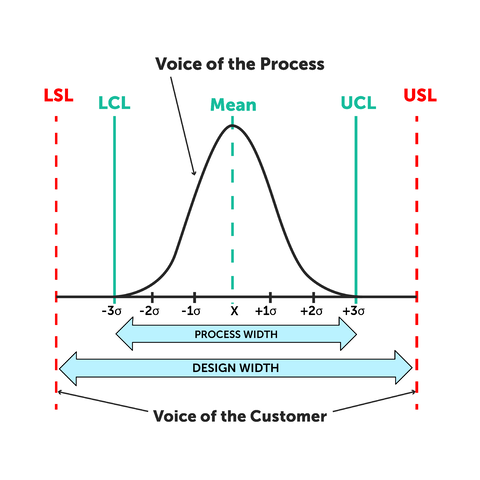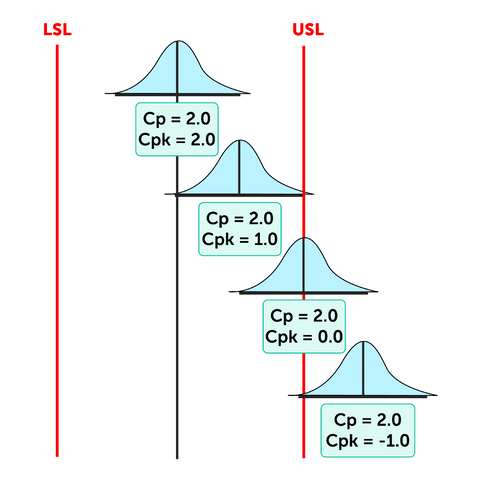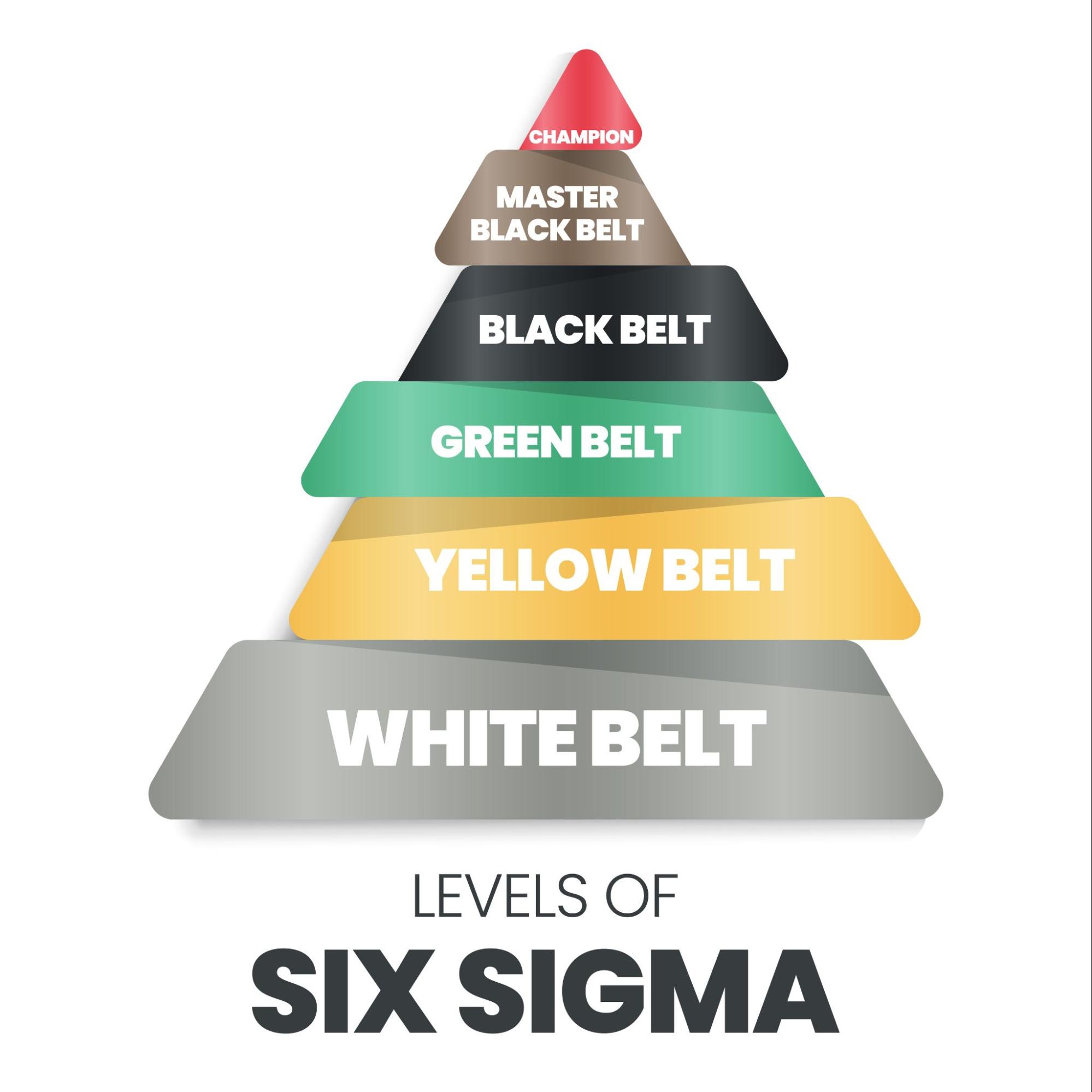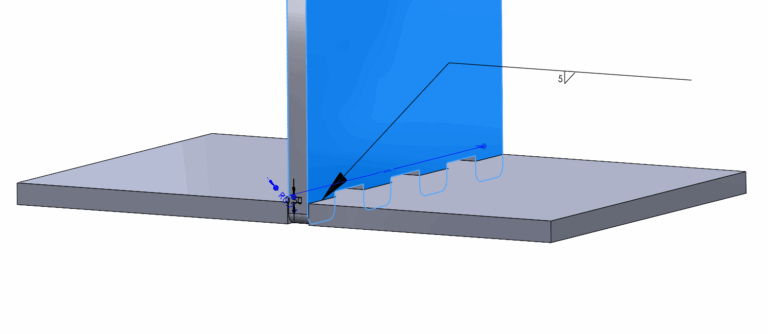Time to read: 7 min
When we talk about Six Sigma today, particularly in the context of manufacturing, we’re referring to a systematic way of making processes more reliable, efficient, and nearly error-free. Initially developed as a quality control system for large-scale manufacturing operations, Six Sigma’s primary goal was to improve processes while reducing the number of defects. Over time, the methodology proved so effective that it expanded beyond manufacturing and spread to industries worldwide.
This article discusses Six Sigma in manufacturing, covering its definition, core principles, benefits, challenges, and associated tools.

What Is Six Sigma?
Six Sigma is a set of management techniques created in 1986 at Motorola by engineer Bill Smith to improve processes by reducing defects. In its first two decades, Six Sigma saved Motorola an estimated $17 billion, after which the methodology was adopted by other companies such as General Electric, Toyota, Amazon, Honeywell, and Microsoft.
“Sigma” (σ) is the statistical symbol for standard deviation, or how much a process varies from its target. Six sigma means the process average is at least six standard deviations from the nearest specification limit, making the defects extremely rare. In practice, this equates to fewer than 3.4 defects per million opportunities (DPMO), with a failure rate of only 0.00034%, assuming a 1.5 sigma shift in the mean (a standard convention in Six Sigma).
The Core Principles of Six Sigma
- Focus on the Customer
The key driver for Six Sigma is a strong focus on customer satisfaction. The goal is to deliver products and services that meet or exceed customer expectations, since true quality is defined by what the customer values. To achieve this, businesses must understand their customers’ needs and preferences, as well as the factors that drive satisfaction and loyalty. Gathering feedback and analyzing requirements helps set the proper quality standards. Once these expectations are clear, processes can be adjusted and improved to deliver better outcomes consistently.
- Use Data and Facts
Six Sigma is all about using facts and data instead of guesswork. By relying on numbers and analysis, organizations can achieve tangible, measurable, and lasting improvements in quality, customer satisfaction, and cost efficiency.. At its best, Six Sigma aims for near-perfect performance—remember, just 3.4 defects per million opportunities.
To achieve this level of consistency, both quantitative and qualitative data are needed. Quantitative data delivers hard, numerical evidence about process performance and variation, while qualitative insights add context and explain the human, organizational, or behavioral factors behind those numbers. Together, they create a complete picture that allows businesses to identify the root causes of obstacles and remove inefficiencies to sustain long-term success.
- Improve Processes
A big part of Six Sigma’s success comes from truly understanding how a process works. This is done through process mapping, which outlines each step in detail and allows teams to see the full picture. By using tools such as flowcharts and graphs, Six Sigma professionals can identify areas where processes are working effectively and pinpoint areas where weaknesses or inefficiencies exist. This visual approach makes it easier to identify problem areas and determine where improvements are needed.
- Reduce Variation
Six Sigma emphasizes reducing variation, which often results in fewer defects and less waste. Variation falls into two categories. Common cause variation is the natural fluctuation built into a process over time, such as changes in material quality, environmental factors, equipment wear, or operator differences. In contrast, special cause variation comes from unusual or unexpected factors, such as anomalies or outside influences that disrupt normal operations.
To manage these variations, Six Sigma uses statistical process control (SPC). Control charts help monitor performance in real-time and signal when special cause variation occurs, allowing for quick corrective actions. Additionally, the DMAIC framework (Define, Measure, Analyze, Improve, Control) provides a structured approach to identify, analyze, and minimize variation.
- Continuous Improvement
Companies that truly adopt the Six Sigma methodology never stop focusing on improvement in manufacturing processes and the supply chain. Six Sigma teams are always on the lookout to identify and prioritize opportunities. Once a certain area has been improved upon, the company will move on to the next area that requires attention. If a process is increased from 4 Sigma to 4.6 Sigma, the organization will consider new ways to further improve the sigma level. The goal is to move as close as possible to the “perfect” level, which is an accuracy of 99.99966%, and to achieve this accuracy for all processes within the organization.

The DMAIC Framework Explained
Six Sigma employs a step-by-step method called DMAIC, an acronym that stands for Define, Measure, Analyze, Improve, and Control. Supporters of Six Sigma believe that by following these five phases, organizations can tackle even the toughest process challenges.
Here’s an overview of the five phases of the DMAIC framework:
- Define: The team selects a process to work on and clearly defines the issue that needs to be solved.
- Measure: The current performance of the process is recorded, creating a baseline and identifying key factors that might be limiting results.
- Analyze: The data is examined to identify the root causes of problems and uncover patterns or inefficiencies.
- Improve: The team develops and applies solutions to address the root causes and boost performance.
- Control: Controls are implemented to maintain the improvements and prevent the process from reverting to inefficiency.
Key Six Sigma Tools for Manufacturing
Since Six Sigma is a data-driven methodology, it utilizes a wide range of tools and techniques that aid in problem-solving, process analysis, and performance monitoring. The following is a comprehensive list of the most commonly used Six Sigma tools:
Process Improvement and Problem-Solving Tools For Six Sigma
| Tool | Description |
| DMAIC process | Structured framework for defining, measuring, analyzing, improving, and controlling processes. |
| 5 Whys | Root cause analysis by asking “why” repeatedly until the fundamental issue is identified. |
| Cause-and-Effect / Fishbone Diagram | Maps possible causes of defects into categories (e.g., people, machines, materials). |
| Failure Modes and Effects Analysis (FMEA) | Rates potential failures by severity, occurrence, and detection to prioritize risks. |
| Process Mapping / Flowcharting | Visualizes workflows to identify inefficiencies. |
| Process Decision Program Charts (PDPC) | Breaks down processes into tasks, highlighting risks and countermeasures. |
| Affinity Diagram | Organizes scattered ideas into themes for clarity. |
| Brainstorming | Collaborative tool for generating potential improvements. |
| Voice of the Customer (VOC) | Captures customer expectations to align process improvements with actual needs. |
Statistical and Data Analysis Tools For Six Sigma
| Tool | Description |
| Control Charts (SPC / IMR) | Track process variation over time against control limits. |
| Cp / Cpk | Process capability indices: Cp measures potential capability, while Cpk shows actual performance while accounting for centering. |
| Design of Experiments (DOE) | Tests multiple input variables systematically to optimize outcomes. |
| Pareto Analysis | Identifies the most common sources of defects using the 80/20 rule. |
| Histograms & Scatter Diagrams | Visual tools that show distribution and relationships between variables. |
| Analysis of Variance (ANOVA) | A statistical test that compares differences between groups to find significant factors. |
Judgmental / Analytical Decision-Making Tools For Six Sigma
| Tool | Description |
| Minitab (software) | Supports advanced data tracking, statistical analysis, and visualization. |
| Benchmarking | Compares processes and performance against industry best practices. |
| Cost of Poor Quality (COPQ) Analysis | Quantifies the financial impact of defects, waste, and inefficiencies. |
| Regression Analysis | Identifies relationships and predictive patterns among variables. |
| Hypothesis Testing | Uses statistical methods (t-tests, chi-square, etc.) to validate significance and guide decisions. |

Learn how to design for variance within control limits by reading Tolerance Stack Ups 501
Six Sigma vs. Lean: What’s the Difference?
Six Sigma and Lean methodologies are often implemented in manufacturing industries. Though these processes are often used together, they have different focuses. Lean manufacturing emphasizes streamlining processes for speed and efficiency while eliminating waste, whereas Six Sigma relies on statistical analysis to improve quality by reducing variation and defects.
Over time, Six Sigma has evolved and merged with Lean manufacturing principles, resulting in the emergence of Lean Six Sigma. This hybrid approach emphasizes not only reducing defects but also eliminating waste, speeding up processes, and creating greater value for customers.

Comparison of Six Sigma, Lean, and Lean Six Sigma methodologies
| Factor | Lean | Six Sigma | Lean Six Sigma |
| Primary Focus | Eliminate waste and improve flow | Reduce process variation and defects | Combines waste reduction with defect reduction |
| Goal | Increase speed, efficiency, and productivity | ≤3.4 defects per million opportunities | Improve efficiency and quality simultaneously |
| Approach | Process simplification and standardization | Data-driven, statistical analysis of processes | Data-driven and waste-focused; integrates tools from both Lean and Six Sigma |
| Tools | 5S, Value Stream Mapping, Kanban, Flow, Visual Workplace aids | DMAIC, Control Charts, FMEA, Pareto Analysis, DOE | Combines tools from both Lean and Six Sigma (e.g., DMAIC + VSM + 5S) |
| Measurement Focus | Lead time, cycle time, and inventory levels | Defect rates, process capability, variation | Both efficiency metrics and defect/quality metrics |
Benefits of Six Sigma in Manufacturing
- Reduces defects and improves process reliability (DPMO improvements)
- Ensures consistently higher product quality
- Uses data and statistics to guide process improvements
- Supports regulatory compliance and process consistency
- Identifies the root causes of problems to inform targeted solutions
- Improves decision-making with measurable results
- Helps prevent errors before they occur
- Increases customer satisfaction through reliable, high-quality products
Challenges in Six Sigma Implementation
- Limited or poor-quality data can hinder analysis and decision-making.
- Resistance from employees or management can slow adoption.
- Maintaining long-term improvements requires continuous monitoring and control.
- A lack of knowledge and resources can be a challenge for companies implementing Six Sigma for the first time.
Six Sigma Belts and Certification Levels
Six Sigma practitioners are trained and certified through a tiered “belt” system, similar to martial arts. Each belt represents a different level of expertise, responsibility, and leadership in improvement projects:
- White Belt – Introductory level, covering basic Six Sigma concepts and terminology. White Belts often support local problem-solving teams.
- Yellow Belt – Provides foundational knowledge of DMAIC and core tools. Yellow Belts typically assist project teams under guidance.
- Green Belt – Intermediate level, focusing on applying Six Sigma tools and leading smaller projects. Green Belts often balance Six Sigma with their regular job responsibilities.
- Black Belt – Advanced level, leading larger projects and mentoring Green Belts. Black Belts are experts in statistical analysis and change management.
- Master Black Belt – Strategic level, focusing on program deployment, training, and cross-functional leadership. Master Black Belts coach Black Belts and align projects with organizational goals.
- Champion (or Sponsor) – Senior executives who sponsor projects, remove roadblocks, and ensure Six Sigma aligns with business strategy.
This structured hierarchy ensures that Six Sigma initiatives have the right mix of technical expertise, project management, and executive support to succeed.

Real-World Six Sigma Applications
- GE under Jack Welch: Saved ~$12 billion in the late 1990s.
- Toyota: Integrating Lean Six Sigma into TPS (Toyota Production System).
- Healthcare: Reducing patient wait times and medical errors.
- Electronics/Software: Utilized by Amazon and Microsoft for operational excellence
Six Sigma as a Path to Operational Excellence
Six Sigma continues to shape business strategies by promoting cultures of continuous improvement, data-driven decision-making, and customer-centricity. It has evolved into Lean Six Sigma to help organizations optimize products and services in the digital age. While industries will continue to change, the core principles of Six Sigma remain relevant.

Looking to improve your part quality? By leveraging Fictiv’s digital manufacturing platform, you can apply Six Sigma principles earlier in the development process, reducing costly rework and accelerating time-to-market with quality-controlled production.
Get started with a free instant quote today.










